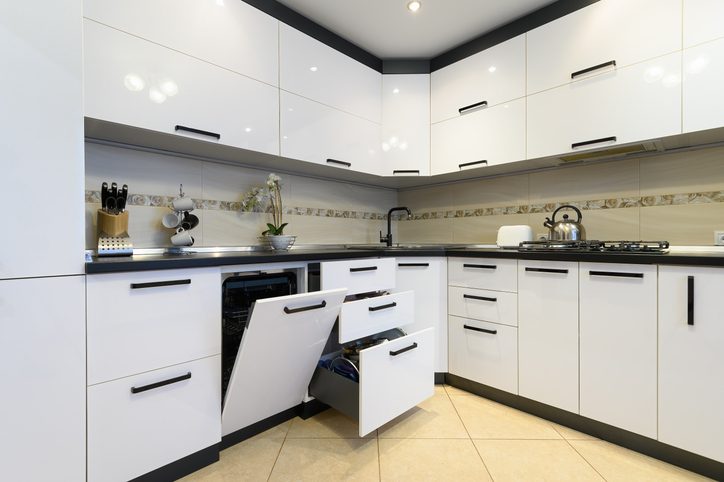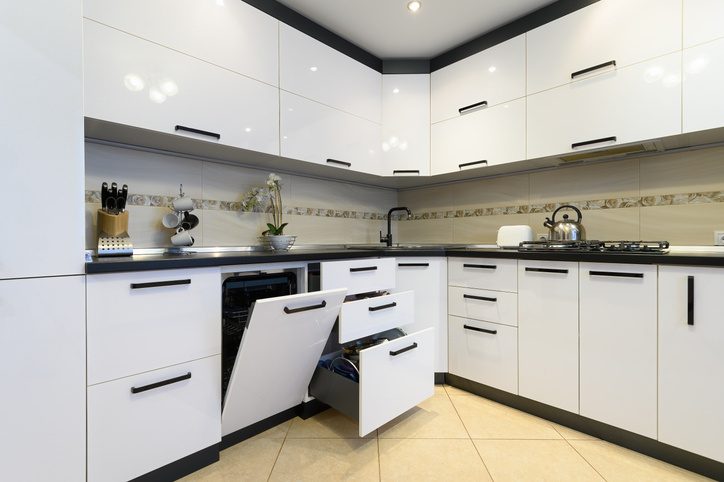There's a lot to consider when designing your kitchen, from color and layout to appliances and materials. Considering that kitchen design is one of the most expensive parts of a home renovation, it should be considered a long-term investment.
But according to research from Magnet Kitchens, two-thirds of nearly 2,000 consumers recently surveyed about their kitchen renovations said they had design regrets. They wish they had spent more on storage space, countertop space, lighting and outlets, and higher quality materials.
“When designing a kitchen, it's essential to make realistic choices. You'll be spending a lot of time in the space, so with that in mind, it's important to love every element.” says Jen Nash, head of design at Magne Kitchens. “I highly recommend it for design choices, from colors to materials.”
Considering the renovator's remorse, Nash reveals what not to put in your kitchen and what renovators should avoid.
harsh lighting
“Hard lighting is not appropriate in the kitchen,” says Nash. “The kitchen as a space has evolved to become the social center of the home. With this in mind, a warm and welcoming atmosphere is needed and harsh bright white lighting completely eliminates the warm atmosphere. She suggests choosing warm lighting temperatures for your kitchen instead of very bright white light bulbs. “Hard lighting can highlight areas that need cleaning and make scuff and scratch marks more visible,” she says.
Excessive use of color
“I'm a big fan of colorful kitchens, but I think too much color can be too overpowering and ruin the beauty of a space,” says Nash. “Dark colors like dark brown and red, as well as bright colors, are beautiful when used in moderation, but you can definitely avoid using them too much.”
For homeowners looking to add some bold color to spice up their kitchen, she suggests using color in moderation, pairing it with bright, muted tones. “This makes the space look more unified and avoids an overwhelming aesthetic,” says Nash. “Like I did in my kitchen, choose slightly more muted colors throughout your cupboards, then accessorize with darker, bolder tones.”
Carefully finished regardless of the material
“One of the biggest 'don'ts' in kitchen design is choosing a material based on its appearance, without researching its properties and practicality,” says Nash. “While certain materials may look good, they can be an absolute nightmare to clean and maintain, and they can also be potentially dangerous.”
She recommends not using plastic laminate in the kitchen. “Although it is an affordable material, it is prone to chipping, which can affect the aesthetics of a space in the medium to long term,” she says.
Another material Nash often recommends avoiding is high gloss. “While it is a desirable finish for some, it is known to show stains and scratches easily, making it particularly unsuitable for those with young families,” she says.
inefficient home appliances
“When designing a kitchen, one of the first things I consider is the efficiency of the appliances I plan to purchase,” says Nash. “Inefficient appliances are no good. The kitchen of the future is poised to prioritize sustainability, with a focus on minimizing environmental impact.” is more expensive, but provides homeowners with savings on energy bills in the long run.
Nash says she prioritized high-quality appliances in the kitchen, including a hot water faucet. She says it's “one of the coolest features in my kitchen and I use it every day.”
L-shaped kitchen
Demand for L-shaped kitchens is on the decline, Nash said, and online searches for this style of kitchen layout are decreasing. “I understand the appeal of an L-shaped kitchen for some homeowners. [but] I don’t think we’re making the most of the space,” Nash says.
Instead, she prefers a one-wall configuration with an island in her kitchen layout. “I think this allows us to make the most of the available space,” she says. Nash said the one-wall layout is space-saving and versatile, allowing it to accommodate a variety of functions within a more compact footprint. However, make sure you have enough space to install a kitchen island. “We love kitchen islands, but their design features only work in certain spaces,” she says. “In some cases, it can completely overwhelm a space, especially if the square footage is limited to begin with. Install a kitchen island only if you have enough space and it won't look out of place. I recommend it.”



